Drones on Everest: Changing the game for high-altitude climbers
Drones can be used to transport life-saving gear such as ladders, ropes, and oxygen cylinders.
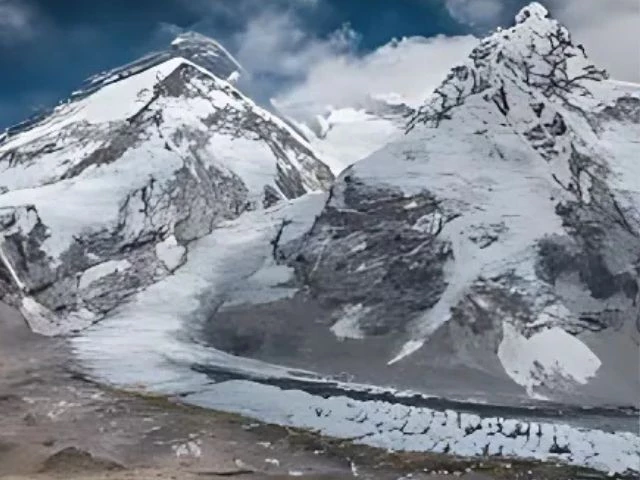
At the top of the world amid pristine white glaciers and towering rock, silence reigns — until it is broken by a ladder falling from the sky.
Pandey, who works with Nepal-based tech firm Airlift Technology, uses drones to transport life-saving gear such as ladders, ropes, and oxygen cylinders to Sherpas stationed between Base Camp and Camp One.
The Khumbu Icefall, a constantly shifting glacier, has claimed dozens of Sherpa lives over the decades. Base Camp sits at 5,364 metres, while Camp One lies at 6,065 metres.
Though the aerial distance between the two points is only 2.9 km (1.8 miles), it takes Sherpas six to seven hours to complete the journey — drones do it in less than seven minutes.
“This can be a game-changer,” Pandey told reporters, highlighting how their technology aims to support — not replace — the Sherpas’ skill and courage.
Pandey and his team envision a partnership where cutting-edge aerial logistics work hand-in-hand with generations of mountaineering knowledge . It is a fusion of tradition and technology.
Mingma G Sherpa, founder of the expedition company Imagine Nepal, which has led climbers for nearly ten years, saw the urgent need for drone support after a tragic avalanche in 2023 claimed the lives of three of his friends and fellow mountain guides. Their bodies were never retrieved.
“They were forced to climb up and down the mountain as many as twenty times — first to find the route and then again to carry the gear. I’d heard drones were being used for similar purposes on a mountain in China, and I thought, ‘Why not here?’” he recalled.
At the same time, Raj Bikram, CEO of Airlift Nepal, was working with local authorities in Khumbu on a drone-based 3D-mapping project of Mount Everest.
During discussions, the region’s mayor inquired about the drones' lifting capabilities. By April 2024, with two drones donated by DJI in China and in coordination with the Sagarmatha Pollution Control Committee, Airlift began its first trials.
“In the beginning, we weren’t sure how the drones would handle Everest’s altitude and cold — it was our first time operating at Base Camp,” said Raj Bikram, CEO of Airlift Nepal. Harsh wind conditions and low visibility posed major challenges, and the team spent a month familiarising themselves with the rugged terrain.
Airlift Nepal’s initial clean-up mission successfully removed around 1,100 pounds (500 kg) of waste from Camp One to Base Camp using drones. The process required over 40 individual flights. Although each drone is capable of lifting up to 66 pounds, the team chose to transport only 44 pounds per trip to ensure stability and safety.
For the 2025 climbing season, Airlift Technology plans to assist Sherpas by ferrying gear to higher camps ahead of time, then switching focus to waste retrieval once climbers begin their ascent.
Sherpas collaborate closely with Milan Pandey, Airlift’s drone operator. They guide the drone team on which direction to scout. Pandey first sends a small drone ahead to map out the safest route. The Sherpas then ascend the icy, treacherous sections of the mountain as they always have.
“Once they see where a ladder or rope is needed, they radio us the coordinates,” Pandey said. “We then fly in the gear.” The drones are also used to deliver critical supplies like oxygen tanks and medicines — cargo that can make the difference between life and death in extreme altitudes.
As Airlift Nepal’s drones take to the skies over the Himalayas, their growing role in climbing and conservation on Mount Everest is undeniable.
This year, Airlift is operating just one of its two DJI drones on Everest, with the second kept in reserve. But expanding the operation would require significant financial backing — each drone carries a hefty price tag of $70,000, excluding operational costs.
“Everything is expensive at Base Camp,” said Airlift Nepal CEO Raj Bikram. “With no electricity, we rely on fuel to charge batteries. Add to that the cost of getting here, hiring skilled manpower, accommodation, food — it all adds up.”
An aeronautical engineer by training, Bikram has long been drawn to drone innovation. Over ten years ago, he built one of Nepal’s first DIY drones — a skillset that proved invaluable during the 2015 earthquake when drones helped guide emergency aid.
But the team’s goals go beyond cargo drops. “Search and rescue is one of our main priorities,” said Milan Pandey, Airlift’s lead drone operator. “When someone goes off trail, we can help locate them quickly using drones.”
“We want to make this profession safer,” Pandey said. “This mountain is part of our identity. Without the Sherpas’ deep knowledge, no one could navigate Everest — and we don’t want to lose that.”
Dawa Janzu Sherpa, 28, knows Everest like few others. For eight years, he has served as a “frontman” with the elite group of icefall doctors — Sherpas tasked with opening and maintaining the perilous path up the Khumbu Icefall.
Led by an experienced elder who plots the route, it’s the frontman who ventures first into the ice, relying on strength and nerve.
“This season there’s a lot of dry ice, which makes it hard to fix trails. Plus, there are ice towers everywhere,” Janzu said. While drones now offer preliminary guidance, the ever-changing weather on the mountain means nothing is guaranteed.
Sherpas like Janzu face a race against time — the trail must be secured before expeditions begin. “If we don’t fix the trails quickly, the climbers get delayed,” he explained.
“The drones bring up ladders and ropes, so we don’t have to keep going back down. That’s saving us time — and lives.”



1727864553-1/Copy-of-Untitled-(68)1727864553-1-100x90.webp)

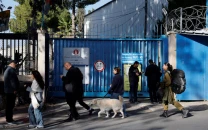



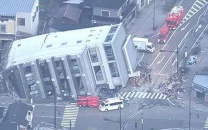
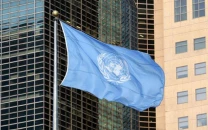



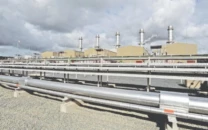








COMMENTS
Comments are moderated and generally will be posted if they are on-topic and not abusive.
For more information, please see our Comments FAQ